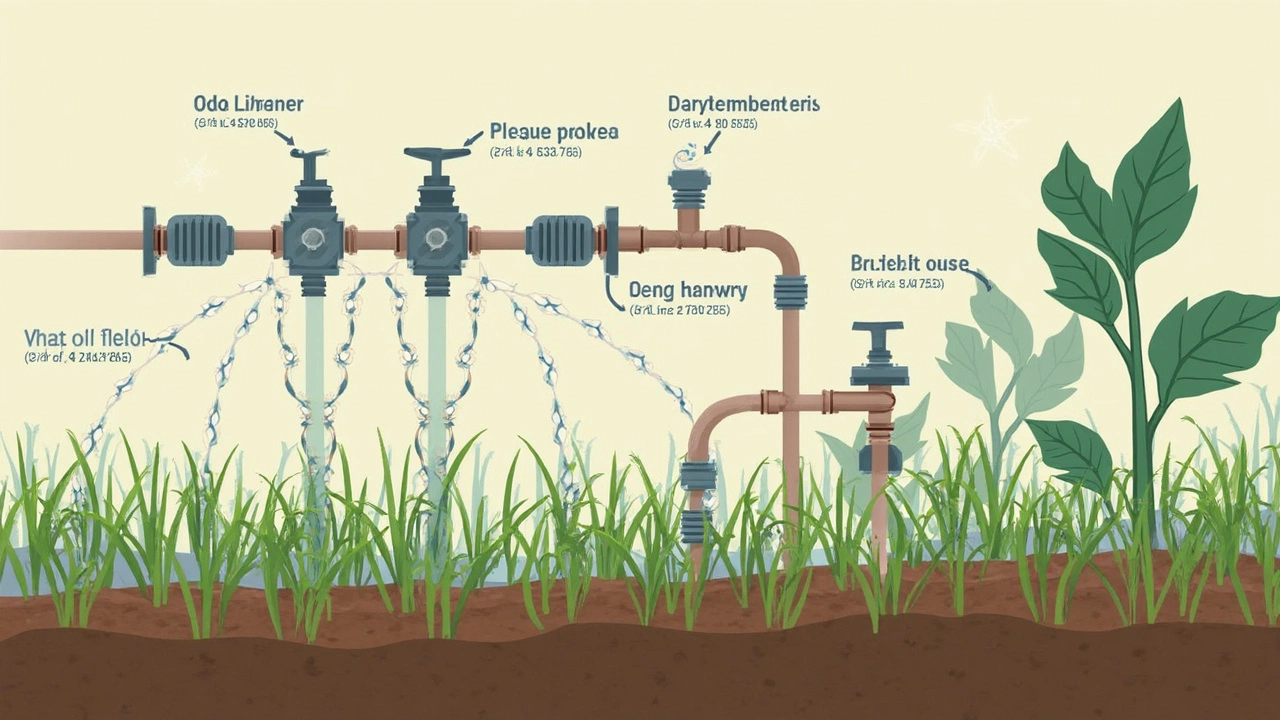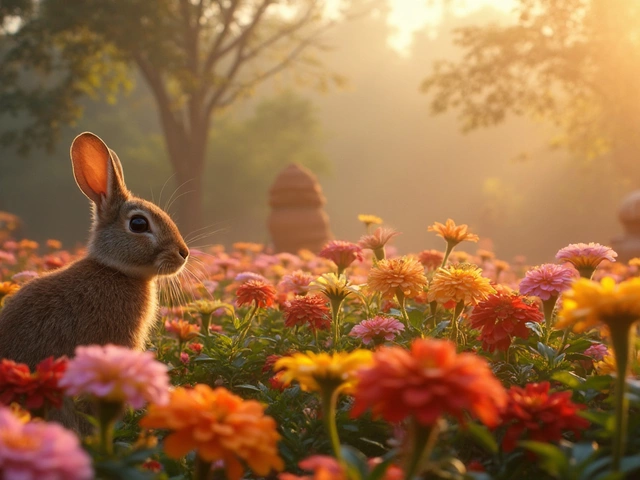When it comes to drip irrigation, knowing the difference between drippers and emitters can make all the difference in creating an efficient watering system for your plants. These two components, while often used interchangeably, have distinct roles. So, what's the scoop?
Drippers are all about precision. They're designed to deliver water directly to the plant's root zone at a steady rate, usually measured in gallons per hour. This makes them perfect for garden beds where uniform water distribution is key. On the other hand, emitters can vary more in design and function, offering flexibility in how they interact with plants.
Understanding these differences not only saves water but also ensures that your plants get the precise amount of moisture they need. Stick around as we dig deeper into these components and how picking the right one can keep your garden thriving.
Understanding Drippers
So, what exactly is a dripper? In the world of drip irrigation, drippers are small devices that dispense water right to the base of your plants. It's all about efficiency—using water wisely while ensuring your plants get what they need.
How Drippers Work
A dripper is typically placed at the end of a tubing system. Water travels through the tubing and exits through these tiny devices, which release a set amount of water over a given period, say 1 gallon per hour or less. This slow and steady approach is gold for plants, keeping their root zones moist without over-watering.
Drippers come in various types—button drippers, flag drippers, adjustable emitters, and more. Each offers some degree of control over flow rates, which you can tweak depending on your garden's needs. They're often color-coded or labeled to indicate flow rates, making them user-friendly even for beginners.
Benefits of Using Drippers
Using drippers in your irrigation system has a few notable perks:
- Water Efficiency: By delivering water right where it's needed, drippers minimize wastage.
- Precision: They allow for meticulous control over water delivery, which is great for plants with different thirst levels.
- Time-Saving: Automated setups mean less time dragging hoses around the yard.
Plus, for those who are into water conservation stats, systems equipped with drippers can reduce water usage by up to 50% compared to traditional watering methods. That's a win for your plants and the planet!
Understanding how to make the most of drippers can transform how you garden, making it both environmentally friendly and efficient.
Getting to Know Emitters
In the world of drip irrigation, emitters play a crucial role. They are the tiny parts that ensure your plants get just the right amount of water without the hassle or wastage. But how exactly do they work, and how are they different from drippers?
How Emitters Work
Emitters are devices that control the amount of water delivered to plants from a tubing system. They work by releasing water at a regulated pace, usually faster than a dripper would, which makes them ideal for plants requiring more water or for areas where the soil needs to maintain a certain moisture level.
Types of Emitters
There are several types of emitters:
- Pressure Compensating Emitters: These maintain a consistent flow rate despite changes in pressure, making them great for uneven terrain or long irrigation lines.
- Non-Pressure Compensating Emitters: These vary flow based on pressure, which can be useful in a controlled environment.
- Adjustable Flow Emitters: Perfect for gardeners who like flexibility. You can tweak the flow rate depending on the plant's needs and the season.
Advantages of Emitters
Emitters offer flexibility in irrigation systems. They can be placed to suit the layout of your garden and the specific needs of your plants. If you're using an emitter, consider the plant types and their water requirements.
Installation Tips
Setting up emitters isn’t rocket science. Like drippers, they attach to the main irrigation line using connectors. Regular checks ensure they aren't clogged by debris, which can mess with the water flow rate. A small bit of maintenance goes a long way in keeping your system efficient.
Whether you're dealing with a sprawling garden or potted plants on a balcony, picking the right emitter can make a noticeable difference in water usage and plant health. By choosing efficiently, you aren't just saving water; you're ensuring your plants thrive in the best conditions possible.

Key Differences
So, what exactly sets drippers and emitters apart in a drip irrigation system? Let's break it down to give you a clearer picture.
Water Delivery Method
This is where the rubber meets the road. Drippers deliver water at a precise spot, usually right near a plant's root zone. Emitters, on the other hand, can be more varied in how they deliver water; they come in different types like spray emitters or adjustable micro-bubblers, offering different coverage areas.
Flow Rate
In terms of flow rate, drippers are designed to release water at a consistent rate, like 0.5 to 2 gallons per hour. Emitters might offer variable flow rates, allowing gardeners to control how much water different plants get, which can be useful for plants with different watering needs.
Usage and Suitability
When it comes to application, drippers are ideal for gardens with uniform plant types that need a steady water supply. Emitters might be better for more diverse gardens with a mix of plant types requiring different watering amounts. Some emitters even let you change the flow rate as the plants grow or as seasons change.
| Component | Flow Rate | Best Suited For |
|---|---|---|
| Dripper | 0.5 - 2 GPH | Uniform plant beds |
| Emitter | Variable | Diverse gardens |
These distinctions matter! Picking between a dripper and an emitter really boils down to what fits your garden's specific needs. Knowing these key differences can make it easier to choose the right component for your irrigation system, saving water and helping your plants thrive.
Choosing the Right Component
Deciding on whether to use a dripper or an emitter for your drip irrigation system involves considering a few key factors. First, think about the specific needs of your plants. Drippers are great for plants that thrive with consistent, precise watering directly at the root zone. If you've got rows of veggies or a dense flowerbed, drippers can keep things even and controlled.
Emitters come into play when you're dealing with more complex setups or plants that need varied water amounts. They can adjust the flow, making them suitable for diverse plant species in one area. Different emitter designs can cater to shrubs, trees, or anything needing flexibility in water delivery.
Understanding Your Soil
The type of soil also plays a massive role. Sandy soils require slower, more consistent watering, making drippers a top choice. Clay soils, however, benefit from emitters that can better handle water pooling before it absorbs.
Consider the Layout
Consider your garden's layout and size. For huge areas, emitters connected to tubing can efficiently cover vast distances. For more compact gardens, precise drippers might be the smarter call.
Cost and Efficiency
Budget-wise, drippers tend to be less expensive but for larger, more diverse garden needs, investing in a range of emitters could be worthwhile. You'll get greater flexibility and control over your watering, potentially saving on water bills in the long run.
Ultimately, there's no one-size-fits-all. It might even be that a combination of both gives you the best of both worlds—efficiency, conservation, and great plant health.





